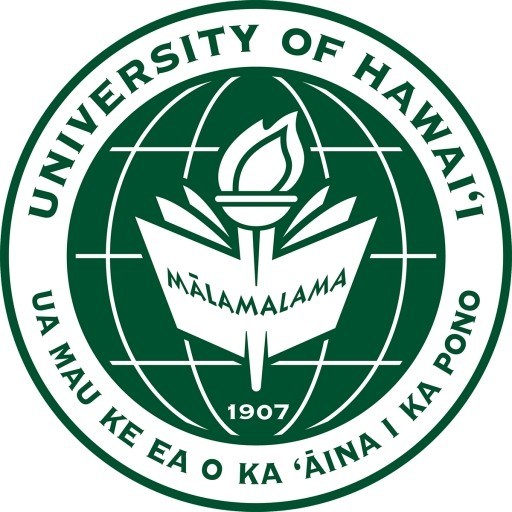Photos of university / #uhmanoanews
The Bachelor of Science in Meteorology at the University of Hawaii at Manoa offers students a comprehensive and rigorous education in atmospheric sciences, equipping them with the knowledge and skills necessary to understand and predict weather and climate phenomena. This program is designed to provide a strong foundation in physics, mathematics, and computer science, which are essential for analyzing atmospheric processes. Students will explore a wide range of topics including atmospheric dynamics, thermodynamics, synoptic and mesoscale meteorology, climate variability, and environmental impacts. The curriculum emphasizes practical training through laboratory work, computer modeling, and field measurements, preparing graduates for careers in weather forecasting, climate research, atmospheric instrumentation, and environmental policy.
The University of Hawaii’s unique geographic location offers unparalleled opportunities for studying tropical and oceanic weather systems, making it ideal for students interested in climate and meteorology in these regions. Students will have access to state-of-the-art facilities, including weather labs, computer centers, and radar equipment, as well as field excursions across the Hawaiian Islands and beyond. The program also encourages interdisciplinary learning by integrating oceanography, earth sciences, and geospatial analysis, fostering a holistic understanding of Earth’s climate system.
Graduates of the Meteorology program can pursue various professional paths, including employment with government agencies like the National Weather Service, NOAA, and other environmental organizations, or continue their studies through graduate programs in meteorology, climatology, or related fields. The program aims to develop analytical skills, scientific curiosity, and a commitment to environmental stewardship, preparing students to contribute meaningfully to society’s understanding and management of weather-related challenges. Through a combination of classroom instruction, research opportunities, and experiential learning, students will be well-equipped to contribute to the advancement of atmospheric sciences and address pressing issues such as climate change and severe weather events.
- MET/ATMO 101 Introduction to Meteorology (3) For nonscience majors and prospective science teachers. Basic atmospheric physics, sun-Earth-atmosphere interrelationships, pollution, major weather systems, weather forecasting, weather of Hawai'i. DP
- MET/ATMO 101L Introduction to Meteorology Lab (1) (1 3-hr Lab) Exercises with meteorological data and measurement systems. Characteristics of Hawaiian winds, temperatures, and rainfall. Pre: 101 (or concurrent) or 200 (or concurrent). DY
- MET/ATMO 102 Pacific Climates and Cultures (3) Highlights the interface between the observed weather and climate of the Pacific and the past and future culture of the people of the Hawaiian and Pacific islands. A-F only. (Alt. years)
- MET/ATMO 199 Introduction to MET Undergraduate Directed Research (V) Students gain familiarity with MET/ATMO research. Students can select 1-3 credits per semester for maximum 6 credits over 4 semesters. Students must pre-arrange research and reading content with instructor. Repeatable up to six credits. Freshman and sophomore standing only. CR/NC only. Pre: instructor approval.
- MET/ATMO 200 Atmospheric Processes and Phenomena (3) Atmospheric variables, gas laws, radiation processes, thermodynamics, conservation laws, dynamic approximations, clouds and precipitation, convection, atmospheric circulations, mid-latitude and tropical weather systems, forecasting, climate. Pre: PHYS 170 and MATH 241. DP
- MET/ATMO 302 Atmospheric Physics (3) Energy and thermodynamics, statics and stability, physical processes of cloud formation, radiation and Earth-atmosphere heat balance, kinetic theory, optical effects. Pre: 200, MATH 242, and PHYS 272; or consent. DP
- MET/ATMO 303 Introduction to Atmospheric Dynamics (3) Scalar and vector development of basic laws of hydrodynamics, equations of motion, kinematics, divergence and vorticity, viscosity and turbulence, introduction to numerical weather prediction, general circulation. Pre: 302 and MATH 244. DP
- MET/ATMO 305 Meteorological Instruments and Observations (3) (2 Lec, 1 3-hr Lab) First- and second-order measurement systems. Response of wind, temperature, and recording instruments. Discussion of advance system including radar. Planning of field programs. Pre: 302 and PHYS 272/272L. DP
- MET/ATMO 310 Global Environmental Change (3) Global environmental change problems such as carbon dioxide and the greenhouse effect, acid rain, chlorofluorocarbons and the ozone layer, global deforestation and the effect on climate, etc. Pre: 200, OCN 201, GG 101, GG 103, or GG 170; or consent. (Cross-listed as OCN 310) DP
- MET/ATMO 320 Programming for Meteorologists (3) Scientific programming in Fortran 77, graphics software and meteorological applications. A-F or Audit. Pre: 302 (or concurrent) and MATH 241; or consent.
- MET/ATMO 395 Undergraduate Internship (V) Experiential approach to earth science; students serve as interns to field professionals; responsibilities include supervised field work. Open to undergraduate SOEST majors. Repeatable one time. CR/NC only. Pre: junior/senior standing and consent. (Fall only)
- MET/ATMO 399 Undergraduate Directed Reading (V) Individual reading in Atmospheric Sciences. Repeatable one time, up to three credits. MET/ATMO students only. Junior and senior standing only. A-F only. Pre: consent.
- MET/ATMO 402 Applied Atmospheric Dynamics (3) Advanced concepts in dynamics: vorticity, cyclogenesis, jet streams, fronts, mesoscale circulations. Pre: 303. DP
- MET/ATMO 405 Satellite Meteorology (3) (2 Lec, 1 3-hr Lab) Orbital elements, ephemerides, viewing geometry; radiation, satellite sensors; interpreting satellite data; applications to synoptic meteorology and forecasting. Pre: 302. DP
- MET/ATMO 406 Tropical Meteorology (3) History; tropical clouds and hydrometeors; typhoons; monsoons; local and diurnal effects. Pre: 303. DP
- MET/ATMO 412 Meteorological Analysis Lab (3) (2 3-hr Lab) Techniques of portraying and analyzing atmospheric structure and weather systems in middle and high latitudes; modern methods of forecasting extratropical systems. Pre: 303 or concurrent. (Alt. years)
- MET/ATMO 416 Tropical Analysis Lab (3) (2 3-hr Lab) Techniques of portraying and analyzing atmospheric structure and weather systems in tropical and equatorial regions; forecasting tropical systems. Pre: 303 or concurrent.
- MET/ATMO 499 Undergraduate Thesis (3) Capstone for senior Meteorology majors. Undergraduate thesis project includes literature review, experiment or research design, data collection and analysis, technical writing of a final thesis paper and oral presentation of the paper. Junior and senior standing only. A-F only. Pre: 302, 303 (or concurrent).
- MET/ATMO 600 Atmospheric Dynamics I (3) Governing equations for moist atmospheric motions, approximations, basic theoretical models, boundary layer dynamics, atmospheric waves, quasi-geostrophic theory for mid-latitudes. Pre: 402, and either MATH 402 or MATH 405; or consent.
- MET/ATMO 601 Atmospheric Dynamics II (3) Overview of dynamic meteorology, numerical weather prediction, geophysical fluid instabilities, approximate dynamical systems, atmospheric general circulation, stratospheric dynamics. Pre: 600 or consent. (Alt. years)
- MET/ATMO 606 Cumulus Dynamics (3) Dynamics of convective systems: tornadoes, waterspouts, squall lines. Interactions with synoptic scale. Pre: 620 or consent. (Alt. years)
- MET/ATMO 607 Mesoscale Meteorology (3) Scale analysis. Observational and theoretical aspects of mesoscale circulation systems. Pre: 600 or consent. (Alt. years)
- MET/ATMO 610 Tropical Climate and Weather (3) Climate and general circulation of the tropics; El Niño and Southern Oscillation; intraseasonal oscillation; trade winds; tropical weather systems; energy balance; typhoons. Pre: 303 or consent.
- MET/ATMO 611 Satellite Data Applications (3) (2 Lec, 1 3-hr. Lab) Principles and practices of satellite remote sensing as used in the atmospheric sciences, specifically clouds, aerosols, precipitation, ocean and land cover datasets from various satellites. Develop skills including data manipulation, analysis, and visualization using Matlab. A-F only. Pre: 620 or consent. (Alt. years)
- MET/ATMO 614 Tropical Cyclones (3) Lecture covering fundamentals of tropical cyclone structure, motion, and impacts on society. Observations from satellites, aircraft, ships and buoys, and numerical simulations focusing on storm structure and track. Some forecasting exercises. Repeatable one time. Pre: 600 and 610, or consent. (Alt. years)
- MET/ATMO 616 Monsoon Meteorology (3) Synoptic components of monsoons, regional and temporal variability, numerical models, research exercises. Pre: 610 or consent. (Alt. years)
- MET/ATMO 620 Physical Meteorology (3) Molecular kinetics, atmospheric thermodynamics, cloud physics, precipitation processes, atmospheric electricity, scattering and absorption of solar radiation, absorption and emission of infrared radiation, radiative transfer. Pre: 302 or consent.
- MET/ATMO 628 Radar Meteorology (3) (2 lec, 1 3-hr lab) Radar hardware, electromagnetic propagation and scattering, radar equation, signal processing, precipitation estimation and polarimetric applications, Multi-Doppler wind synthesis, mobile and spaceborne radars, forecasting, and data assimilation applications. A-F only. Pre: 620 (with a minimum grade of B- or higher) or consent. (Alt. years)
- MET/ATMO 631 Statistical Meteorology (3) Probability; frequency distributions of atmospheric variables; linear models; time series analysis (frequency and time domain); principal component analysis; statistical weather forecasting and verification. Pre: MATH 371. (Alt. years)
- MET/ATMO 632 Advanced Statistical Methods in the Geosciences (3) Methods for numerous multivariate analyses will include singular spectrum, extended empirical orthogonal function, singular-value decomposition, canonical correlation, discriminant and cluster analysis. Other advanced topics include wavelet analysis, statistical downscaling and Bayesian analysis. A-F only and audit. Pre: 631 or consent. (Every 3rd year)
- MET/ATMO 665 Small-Scale Air-Sea Interaction (3) Observations and theory of small-scale processes which couple the atmosphere and ocean boundary layers, including introduction to turbulence theory and parameterization of turbulent fluxes. Pre: MATH 402 and 403 (or their equivalents) and either 600 or OCN 620; or consent. (Alt. years) (Cross-listed as OCN 665)
- MET/ATMO 666 Large-Scale Ocean-Atmosphere Interactions (3) Lecture/seminar introduces physical oceanography and meteorology students to the state-of-the-art theories and observations of large-scale ocean-atmosphere interaction, as well as conveying the fundamental understanding that has been developed during the past 30 years. Emphasis will be on phenomena such as El Niño/Southern Oscillation, the North Atlantic Oscillation, the Pacific Decadal Oscillation, and global climate change. Repeatable one time. Pre: 600 or OCN 620, or consent. (Alt. years) (Cross-listed as OCN 666)
- MET/ATMO 699 Directed Research (V) Repeatable unlimited times. Pre: consent.
- MET/ATMO 700 Thesis Research (V) Repeatable unlimited times.
- MET/ATMO 702 Numerical Weather Prediction (3) (2 Lec, 1 3-hr Lab) Fundamental methods and techniques in numerical weather prediction: time differencing, spatial finite differencing, spectral methods, numerical stability, explicit and implicit methods. Modern operational and research forecast models. Hands-on laboratory includes simple to complex dynamic models, with a term project. Repeatable one time. Pre: 600 or OCN 620; MATH 407 or 408; or consent. (Alt. years)
- MET/ATMO 704 Climate and Climate Variability (3) Physical basis of climate, numerical climate models, paleoclimatic indicators, modern instrumental climate records, assessment of human impact on climate, predictions of future climate. Repeatable one time. Pre: 600 or OCN 620, or consent. (Alt. years)
- MET/ATMO 706 Tropical Climate Dynamics and Modeling (3) Overview of current progress in tropical climate dynamics with a particular focus on large-scale atmosphere-ocean interactions; introduction of basic numerical techniques for students to construct and run immediate tropical atmosphere and ocean models. Pre: 600.
- MET/ATMO 708 General Circulation of the Atmosphere (3) Theory, observations, large-scale analyses, and global model simulations that describe characteristic large-scale circulation of the Earth's atmosphere. Includes zonally averaged climatology, asymmetric features of the general circulation, and El Nino-Southern Oscillation phenomenon. Repeatable one time. Pre: 600 or consent. (Alt. years)
- MET/ATMO 752 Special Topics in Meteorology (3) Concentrated studies on selected atmospheric problems. Repeatable two times. Pre: 600 or consent.
- MET/ATMO 765 Seminar in Meteorology (1) Participation in departmental seminars and presentation of a seminar on research results. Includes written critiques of departmental seminars. Repeatable three times. Pre: consent.
- MET/ATMO 800 Dissertation Research (V) Repeatable unlimited times.
Requirements
- Application form;
- One official copy of transcripts directly from the registrar of each institution attended;
- Official GRE (GEN) scores (required of all doctoral applicants; strongly recommended for M.S. applicants);
- Official TOEFL score report (Foreign applicants); and
- Application fee $100
- Interest statement;
- Three letters of recommendation from former professors or employers;
- Curriculum vitae (one page).
Scholarships
- Graduate Assistantships
- Achievement Scholarships
The University of Hawaii at Manoa offers a comprehensive program in Meteorology designed to prepare students for careers in weather prediction, climate analysis, and atmospheric research. The program emphasizes a strong foundation in atmospheric science, physics, and mathematics, providing students with the necessary skills to understand and forecast atmospheric phenomena. The curriculum includes coursework in meteorological principles, atmospheric dynamics, thermodynamics, and climate variability, alongside practical training through laboratory work and field studies. Students have access to state-of-the-art meteorological instrumentation and computer modeling facilities, supporting experiential learning and research activities. The program also encourages interdisciplinary collaboration, integrating oceanography, environmental science, and geophysics to address complex atmospheric issues. Graduates of this program are equipped to work in government agencies such as the National Weather Service, research institutions, private meteorological firms, and environmental consulting companies. The program is supported by the university’s strong research community, renowned faculty, and partnerships with meteorological organizations, providing students with invaluable networking and internship opportunities. Located in Hawaii, the program also offers unique insights into tropical meteorology and climate dynamics, with field trips and research projects focused on Pacific weather patterns and ocean-atmosphere interactions. The program aims to produce well-rounded meteorologists capable of tackling current and future atmospheric challenges, including climate change and extreme weather events. Students are encouraged to participate in seminars, workshops, and international conferences to stay abreast of the latest developments in atmospheric sciences. The university’s commitment to undergraduate and graduate research fosters a vibrant academic environment where students can contribute to scientific advancements in meteorology. Overall, the Meteorology program at the University of Hawaii at Manoa is designed to develop proficient professionals in atmospheric sciences, equipped with both theoretical knowledge and practical skills to succeed in a variety of meteorological careers.


